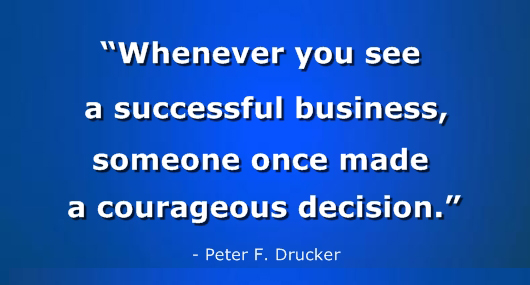Are you ready to chase your entrepreneurial dreams and launch a new home-based business?
That new business idea has likely been rattling around in your brain for months, if not years. That spark of an idea, that vision of something different, something better. You can see the need, you can see the potential, but you can’t – quite – see how to bring it all together and create a full-fledged business out of that spark.
The biggest trick with starting a new business, is that very first word… STARTING.
It’s far too easy to think about the new business idea, to ponder, to wonder, and to dream. Taking the leap and trying to bring that dream to life is a very difficult task, and it’s not always for the faint of heart.

The point with any new home based business is to get started. As they say, “a journey of a thousand miles begins with a single step”, we’ve gone even further and are providing five simple steps to help you begin that journey.
STEP 1 – START SOMEWHERE – GIVE YOUR NEW BUSINESS A NAME
The first step doesn’t have to be a big one. It can be as simple as picking a name for your new business. Based on that brilliant spark of an idea that you have, what would you call it?
Creating a name for the business will help you visualize what it is you want it to be and help turn that vague idea into something real and tangible. You may think that seems frivolous, after all… what’s in a name?

However, there is a LOT in a name. A name makes the impossible start to feel possible. A name gives you something tangible to work on. A name makes your new business real.
I’ll be honest with you, there is a pretty strong possibility that your business name will change by the time you’re done – and that’s ok.
After all, search marketing powerhouse Google was originally called “Backrub” because of the way it analyzed the internet’s backlinks to determine the importance & relevance of each website it indexed. BackRub lasted less than a year before the name “Google” was registered on September 15, 1997. And even Google.com was initially a typo when the team had intended to register “googol.com” but typed in google.com instead. Google Co-founder Larry Page decided that he liked that name even better, and a legend was born.
Even if your new business name turns out to be temporary, if it gives you the drive to move on to the next step, then it served its purpose.
STEP 2 – TELL SOMEONE YOU TRUST, WHO WILL PUSH YOU TO KEEP GOING
It is possible that your new business idea could be SOOOO unique and radical, that you will need to keep it secret until you have the legal protection you need to make sure someone else doesn’t take your idea and run with it. After all, ideas alone are not protected by law… everybody has them.
However, a much more likely scenario will allow you to find at least one person in your life who you can talk with about your idea. By telling them about it, and about what you want to do with your new business, you create a public statement of your intentions.
It is much harder to do nothing about your idea when you have someone asking you about it. It will put pressure on you to continue moving forward, and sometimes that’s all that stands between and idea and a reality… forward movement.
Perhaps that one person is a potential business partner who can fill in some of the execution gaps you have between the idea and the actuality. Perhaps that one person is your spouse. Perhaps that one person is your parent.
Worst case scenario, perhaps that one person a business lawyer. Hire them for a consultation, that way you are fully protected because of your status as their client.
STEP 3 – REGISTER YOUR DOMAIN NAME
Another simple step in starting a new business is taking that business name that you created in Step 1 and turning into an official dot-com (or some other variation) domain purchase.

This serves two purposes:
- It makes your name even more official, because it now has a piece of the online world attached to it
- You’ve now made an investment in your business, so there’s a financial reason to keep going
Plus, think about the other definitions of the word “domain” and how empowering they can feel:
do·main (( dōˈmān/ – noun ))
| synonyms: | realm, kingdom, empire, dominion, province, territory, land |
| synonyms: | field, area, sphere, discipline, province, world |
Domain names are not expensive, you can usually pick one up for about the cost of a really fancy Starbucks coffee. So, even if you change your mind on the name later, it’s not like you’ve dropped thousands of dollars on branding support. However, creating one more piece of the official puzzle gets you one step closer to bringing your business dream to life.
A now, a word from our sponsors:
Plus, there’s nothing more frustrating than having created the PERFECT name for your new business, then finding out that someone else registered your domain name while you were stalled on Step 2.
STEP 4 – START DRAFTING YOUR BUSINESS PLAN
Note the critical importance of the fact that I’m not saying “Write a Business Plan”… these are the 5 Simple Steps, and writing a business plan is FAR from simple. However, you can Start Drafting the elements of your business plan. Tackle some of the easier parts.

Entrepreneur.com has a great article on the 8 Key Elements of a Winning Business Plan, but all I’m suggesting is that you draft up some rough copy for one or two of the 8 key elements. You will note the very subtle use of colors in the headers outlining each of the 8 Elements to provide some indication on which ones would be good starting points to tackle.
- Executive Summary: this element is an overview of your complete business plan, so it’s easier to write once the rest of the plan is done. Therefore, it is best to NOT start here.
- Business Description: considered the backbone of your business plan, this section includes a overview of what your business is all about and why YOU are the person who can help make this business successful. This is a GREAT place to start, because writing down information to convince others why your business will succeed is also an exercise in convincing yourself of those very same thing.
- Products and Services: This would – perhaps – be the easiest piece to draft, as all you need to do is describe what is unique about the product or service you plan to center your business around. Remember, we are not asking you to meticulously craft the wording around this… just draft the rough ideas.
- Sales and Marketing: Although this is a very important part of a concrete business plan because it provides a deep dive into the industry you intend on tackling, the state of the market, general costs, and also gives you a chance to craft how you plan on distinguishing yourself from competitors. However – let’s be honest – this is not a SIMPLE step, and you’re probably not ready for this quite yet.
- Operations: This gets into the nitty-gritty details of how and where you will operate your business. You can come back to this later.
- Management Team: Normally, this is where you would acknowledge the involvement of the select few advisers and professionals who have helped you build your plan and who will likely contribute to your overall success. At this stage, this might be a great point to think about who you would LIKE TO talk to about your business. Instead of an acknowledgement, make it a wish list.
- Development: You’re not ready for this yet, so don’t even think about it as you might let it overwhelm you.
- Financial Summary: The overall financial health of your business and your proposed cash flow is something you will need to tackle — later.
It’s not important – at this stage – to create the perfect, most brilliantly crafted Business Plan ever known to mankind. What is important – at this stage – is to take those ideas that have been floating around inside your head for far too long and start putting pen to paper.
STEP 5 – SET A DATE
Think of it like sending a “Save the Date” card to yourself. You can pick this date because of a reasonable time-frame to complete the rest of the not-so simple steps. You can pick these date because of a milestone in your life, such as “I want to get this business launched before I’m 40!” Or, you can pick this date because of some relevance to the business.
For example, a client of mine once picked the name “August Decor” for a home decor business he was starting. Although he picked the name “August Decor” because of the definition of the word August (beyond the calendar reference), as it meant “inspiring reverence or admiration; of supreme dignity or grandeur; majestic.” he decided that it made the most sense to launch a company called August Decor IN August. So that’s the date he picked.
Granted, by the time the business launched, the name and the launch date had both changed. But the point of this story is… the business DID launch.
The Final Word
This is – by no means – a comprehensive “to do” list that will get your from the starting block to the finish line of your new business. But, as we said at the beginning, the biggest hurdle to success is never starting!


